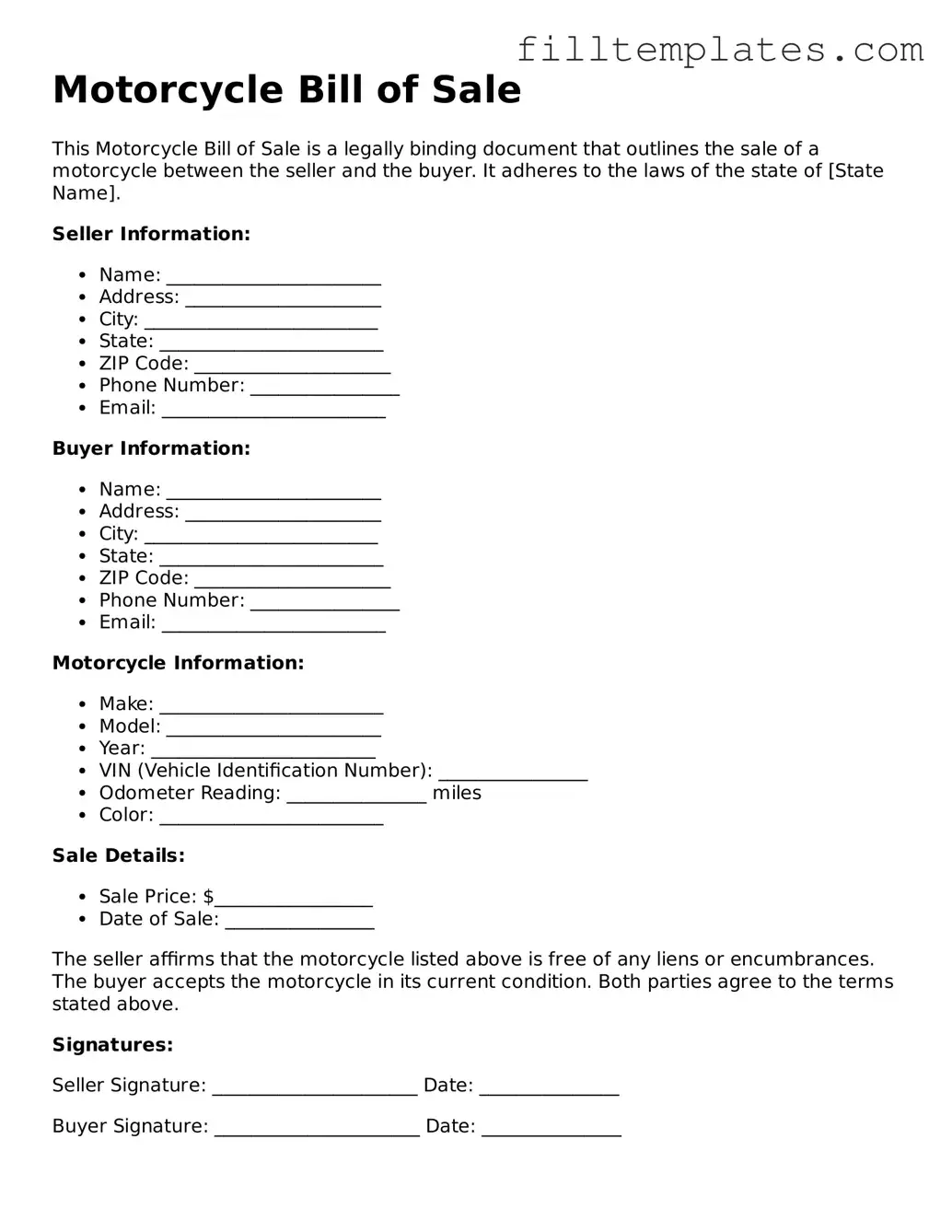Motorcycle Bill of Sale
This Motorcycle Bill of Sale is a legally binding document that outlines the sale of a motorcycle between the seller and the buyer. It adheres to the laws of the state of [State Name].
Seller Information:
- Name: _______________________
- Address: _____________________
- City: _________________________
- State: ________________________
- ZIP Code: _____________________
- Phone Number: ________________
- Email: ________________________
Buyer Information:
- Name: _______________________
- Address: _____________________
- City: _________________________
- State: ________________________
- ZIP Code: _____________________
- Phone Number: ________________
- Email: ________________________
Motorcycle Information:
- Make: ________________________
- Model: _______________________
- Year: ________________________
- VIN (Vehicle Identification Number): ________________
- Odometer Reading: _______________ miles
- Color: ________________________
Sale Details:
- Sale Price: $_________________
- Date of Sale: ________________
The seller affirms that the motorcycle listed above is free of any liens or encumbrances. The buyer accepts the motorcycle in its current condition. Both parties agree to the terms stated above.
Signatures:
Seller Signature: ______________________ Date: _______________
Buyer Signature: ______________________ Date: _______________
